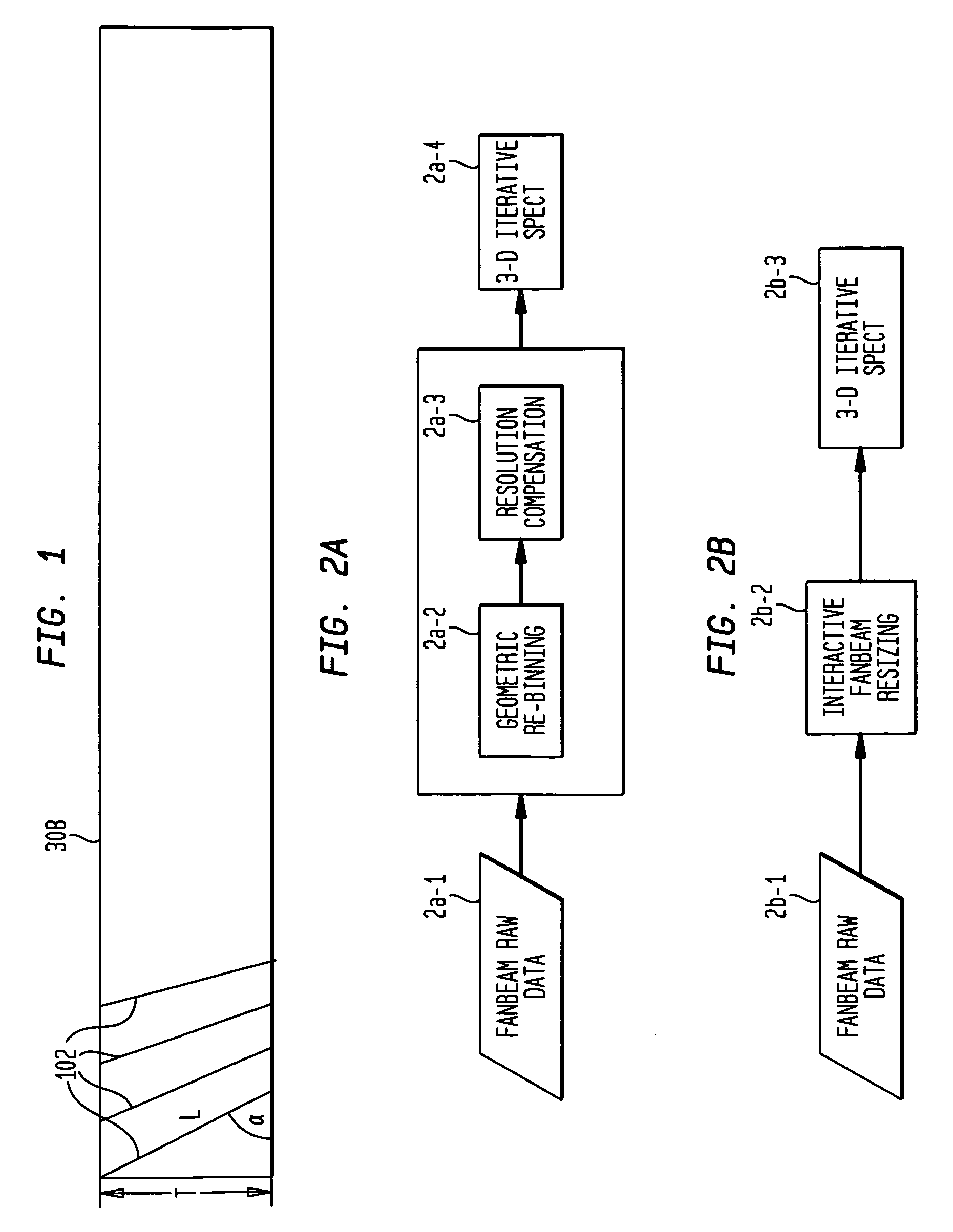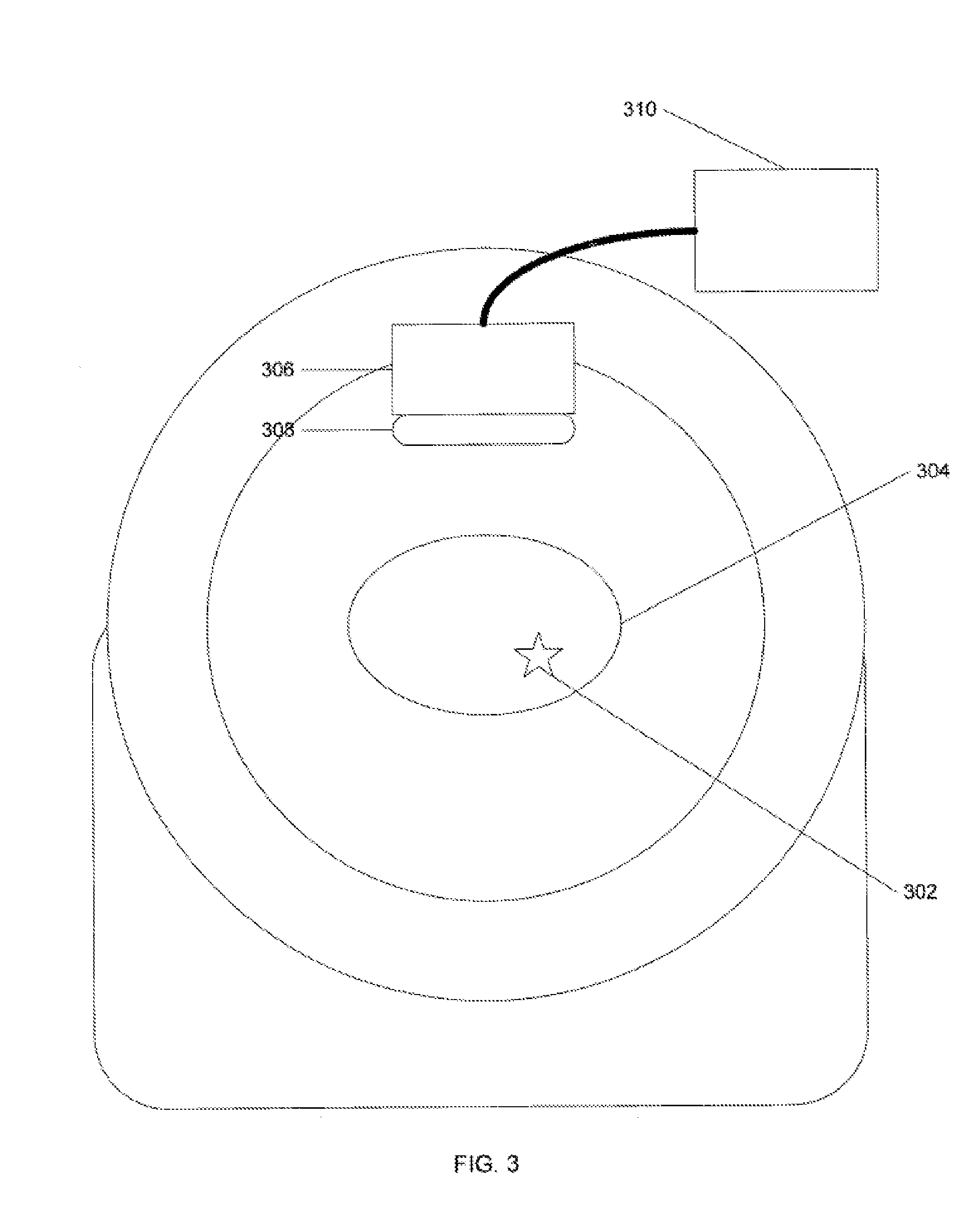Re-binning method for nuclear medicine imaging devices
a nuclear medicine and imaging device technology, applied in nuclear engineering, instruments, and handling using diaphragms/collimeters, etc., can solve the problems of significant affecting resolution, simple rebinning and subsequent use of 3d-modeling with iterative methods, and inability to accurately account for the effective 3d-beam angle of collimator holes
- Summary
- Abstract
- Description
- Claims
- Application Information
AI Technical Summary
Benefits of technology
Problems solved by technology
Method used
Image
Examples
Embodiment Construction
[0023]While the present invention may be embodied in many different forms, a number of illustrative embodiments are described herein with the understanding that the present disclosure is to be considered as providing examples of the principles of the invention and such examples are not intended to limit the invention to preferred embodiments described herein and / or illustrated herein.
[0024]The present invention compensates for the non-stationary resolution and sensitivity issues that arise during or after the rebinning process and prepares projection data as if it had been acquired from a different, specified collimator for use in 3-D iterative SPECT reconstruction, such as 3D-OSEM. The present invention can be applied to convert data acquired with any 3-D beam converging or diverging collimator to parallel hole collimator data, or vice versa.
[0025]FIG. 2a is a flow chart of a method for performing collimator data conversion according to an embodiment of the present invention. Fanbe...
PUM
 Login to View More
Login to View More Abstract
Description
Claims
Application Information
 Login to View More
Login to View More - R&D
- Intellectual Property
- Life Sciences
- Materials
- Tech Scout
- Unparalleled Data Quality
- Higher Quality Content
- 60% Fewer Hallucinations
Browse by: Latest US Patents, China's latest patents, Technical Efficacy Thesaurus, Application Domain, Technology Topic, Popular Technical Reports.
© 2025 PatSnap. All rights reserved.Legal|Privacy policy|Modern Slavery Act Transparency Statement|Sitemap|About US| Contact US: help@patsnap.com



